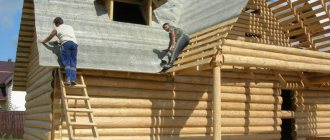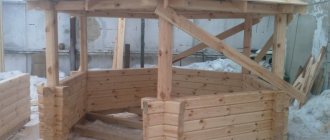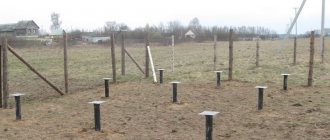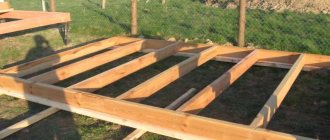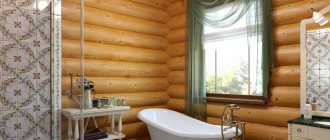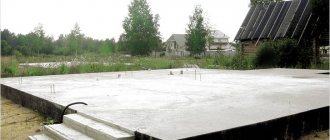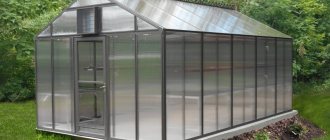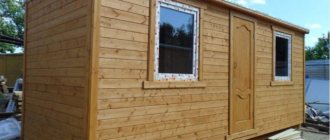When designing, constructing and operating baths and premises of a built-in type of dry heat, that is, saunas (hereinafter referred to as saunas), according to fire safety and sanitary rules, one should refer to the same standards. Moreover, there are rules that require compliance even with private sauna construction. If you plan to become not only a guest in the world of high temperatures and steam, but the owner of an establishment that provides such services, you need to become more familiar with the requirements of inspection structures, primarily the SES (Rospotrebnadzor) and the State Fire Service (State Fire Inspectorate).
Public bath: dimensions, layout, proportions
You cannot demand from an individual (family) bathhouse everything that a public bathhouse can provide, if only because of its limited size (swimming pool, steam room, washing room, etc.).
Indeed, when building a family bathhouse, they usually try to keep the height to a minimum (from the point of view of a comfortable stay in it), guided by the fact that the smaller the volume of the bathhouse (especially the steam room), the less heat (and therefore fuel, and time, and strength) will be required to warm the bath to the desired temperature. However, this does not take into account many very important factors that contribute to the direct dependence of steam quality on the volume of the room, and the overall quality of bath procedures - on the correct layout and proportionality of the bath.
So, for example, if we are talking about steam, then the entire success of the procedure will largely depend on the thickness of its layer under the ceiling, or, as it is commonly called, the “steam pie”. It is this thickness that is the determining factor in the duration of the pleasant warming procedure in the steam room. And the thickness turns out to be greater the lower the door in the steam room and the higher the ceiling: after all, with a low ceiling, even the most insignificant movements of those staying in the steam room willy-nilly disperse the steam, which, in turn, goes “in search” of the smallest holes in the ceiling and walls. As a result, a lack of steam occurs quite quickly.
In addition, what we ultimately breathe when we steam depends on the volume of the steam room: after all, fresh air enters the steam room only when we ventilate the bathhouse. And it is very desirable that its volume is enough for everyone present to breathe fully, which is quite difficult to achieve in a small steam room.
Based on this and similar factors, a public bathhouse is, of course, preferable to a private one. True, only if it is built in full compliance with sanitary and hygienic requirements and taking into account all the subtleties of the bath business.
So, a public bathhouse usually consists of:
- steam room (or several steam rooms capable of maintaining different temperature conditions);
- locker rooms;
- rest rooms;
- showers (washing);
- swimming pool
If a public bath is planned as a whole health or entertainment complex that meets the needs of various categories of the population, then it can, of course, be supplemented with such premises as, for example, a children's room, a massage room, a solarium, a jacuzzi, etc. But all these additions should not in any way affect the minimum dimensions and proportions of the main premises.
The main premises must occupy a total area of at least 150 square meters. m. Of these, at least 15 square meters are allocated for steam rooms, and the ratio of steam rooms, showers, locker rooms and rest rooms to this area should be in the proportions 1: 2: 1: 4. The remaining area is allocated for the pool. Its optimal length for a public bath is about 5 meters, the minimum is 1.5 x 2.5 m with a depth of at least 0.8 m. The pool can be designed as in-depth or (if the first option is not possible) raised above the floor level. The number of showers in the shower rooms is planned at the rate of one shower for 8-10 people.
To avoid discomfort and colds in a public bath, it is necessary to observe a special temperature regime for each of the main rooms during bathing. They should be able to maintain the following temperatures without much effort and constantly:
- for steam rooms - not lower than 50 - 55°C;
- for showers - only slightly higher than human body temperature, about 40°C;
- in the locker rooms and rest room - not lower than 21°C.
These requirements are achieved not only through proper organization of heating and the use of high-quality insulation materials, but also through reasonable planning.
Requirements for ensuring epidemic well-being
These requirements imply:
- monthly activities to exterminate rodents and parasites;
- ongoing elimination of defects in floors and walls (as cracks form);
- weekly general cleaning;
- routine cleaning during the working day;
- the final “promenade” of the cleaning employee at the end of the working day, the last cleaning is done with the mandatory use of disinfectants.
The SES will definitely check the disinfection log and the consumer’s corner in the sauna.
Public bathhouse project
Project for the construction of a public bathhouse, modern requirements for visiting public places, bathhouse complexes of a new stage being built, video of an ancient bathhouse complex in Riga.
Typical designs of public baths
They are usually calculated:
- for urban conditions from 50 to 300 seats;
- for rural areas – from 10 to 25 visitors per day.
They also have separate standards and requirements for public places to comply with hygiene and safety rules. For public buildings, where the capacity significantly exceeds the number of visitors to family baths, there are separate provisions fixed by SNiPs and GOSTs - official documents on the right to conduct this type of activity.
The development of projects is based on the requirements of SNiP 31-06-2009, which is guidance and methodological recommendations for the construction of public buildings and structures. They take into account all the nuances of the construction of public baths, from allocating a certain area for the building to determining the territory for parking cars.
Modern requirements for projects
Modern projects for public spaces are diverse and very diverse. They provide for both traditional premises with a standard floor height of 3.30-4.20 meters with window openings located at least 1.50 meters from the finished floor line, and the introduction of separate luxury class offices into the project. As additional space, projects may include the construction of swimming pools and plunge pools. For lovers of moist hot steam, the complexes can be equipped with rooms of a classic Russian corner bath, for those who prefer dry hot air - rooms of Finnish saunas. The design of structures for collective visits at the present stage has long been no longer based on the traditional standard construction of the old formation. The construction and location of premises are driven by consumer demands, which are not satisfied by the large accumulation of human masses in cramped dressing rooms and stuffy locker rooms. No one is anymore satisfied with the tight hum of the washing department and the crush in the steam room.
Diversity of the market for services provided
The service market is often driven by a growing interest in bathhouse facilities with eastern traditions, rooted in the distant past. Thanks to them, new complexes were built in the hammam style, with soft steam and heated surfaces of the room, baths made of logs in the Japanese ofuro or sento style. Infrared sauna projects with internal lining made of Canadian cedar began to be ordered more often.
The construction of such institutions requires substantial financial investments, since equipment for this type of complex for visiting a large number of people is quite an expensive pleasure. But, despite the costs, the number of people wanting to spend their leisure time “in a special way” is only increasing.
Nowadays, public baths, as well as large domestic baths and complexes, are a place of relaxation for a reputable company, where it is possible to relieve stress after a working week and stock up on strength for the coming everyday life.
Social bath complexes
But this category of structures being built does not give up its positions. Its availability in the form of low cost of services remains its main advantage to this day. It makes no sense for general developers to build palace mansions while investing capital in the construction of social bathhouses made of logs, designed for the average level of income of the population. Therefore, typical projects contain traditional premises, such as a dressing room, a waiting room, a locker room, a washing room and a steam room. It is in such bath complexes, built not only from wood, but also from brick or foam blocks, that preferential services are provided for a certain category of people, such as participants in military operations, pensioners, students, as well as low-income citizens, where they are given discounts on visiting.
A social collective bath complex, as a rule, has additional types of services. When designing it, additional areas are being introduced for hairdressing salons, massage rooms, and a buffet. The vision of collective baths from the point of view of ancient dogmas is becoming a thing of the past, being developed using modern technologies, materials, design skills and taking into account the requirements of today's visitor.
A unique video of the ancient bath complex “Nelli’s”, which is currently functioning in Riga:
State Fire Supervision Requirements
At the design stage, familiarize yourself with the basic requirements of the PPB. They should be taken into account both when planning premises and the alarm system in them, and when choosing sauna cladding; for example, the use of resinous wood is strictly prohibited. Deciduous trees are preferred.
Premises requirements
The walls of the steam room are made of durable material (brick or concrete, that is, type I fire partitions are installed), the ceilings are made of type III (reinforced concrete). A separate exit from the dry heat room to the street is required (not to the reception, staircase or somewhere else).
The volume of the dry heat room is strictly standardized:
- 8-24 m3;
- with a height of -1.9 m.
An electric heater (heater) is selected based on the volume of the sauna, provided that it consumes no more than 15 kW. Permitted continuous operation is eight hours. After this, the electric heater should turn off automatically.
Additional requirements for it:
- The control is mounted in front of the steam room.
- All cables are made with the maximum degree of protection and heat resistance.
- The heater is installed at a distance of 0.2 meters from the wall to avoid fire.
- A shield with a 5-centimeter gap from the ceiling is mounted above the heater. The shield material must be fireproof and prevent overheating and destruction of the ceiling.
The maximum permissible temperature in the sauna is 110°C. The steam room is under no circumstances sealed. You need to leave a gap of 3 cm between the floor and the door. This allows for a flow of dry, hot air into the room.
PPB: basic requirements
The dry heat room itself (steam room) is equipped with a deluge (dry pipes connected to the water supply system are installed around the perimeter of the “steam room”). The control is installed before entering the dry heat room. Some designers propose to “close” the steam room with “sauna” type heat sensors with a PTLM wire; this system is triggered at 150°C.
Showers can be classified as rooms with wet processes. They do not install AUPS. Smoke detectors must be installed in locker rooms, administrative and service rooms. In these rooms, it is prohibited to use coating materials that are easily flammable and highly smoky.
The following fire extinguishing systems are acceptable for saunas:
- foam;
- water;
- gas.
The presence of additional, more stringent requirements may be due to the large throughput of the enterprise, the presence of additional premises (billiard rooms, stores of related products, cafes).
Personnel requirements
It is unacceptable to allow persons under 18 years of age to operate sauna equipment. All workers servicing sauna equipment must be trained in safe working techniques and know the safety regulations.
They must know:
- rules for turning on/off equipment;
- main types of problems;
- their actions if any malfunctions are detected;
- their actions in the event of a fire.
Additional recommendations
Use air heating sensors that automatically turn off the electricity supplied to the heater when overheated as a supplement to RCDs and automatic machines. Use basalt/mineral board as thermal insulation material. Treat wooden surfaces with fire retardants at least twice a year.
Fire extinguishing systems in saunas can be manually started. The first ones are not very good due to the human factor, the second ones are prone to false alarms. To correct the situation, it is recommended to use not only smoke detectors, but also temperature detectors and flame detectors in conjunction with them.
To avoid fire in the sauna it is prohibited:
- install homemade heating elements;
- leave the heater running unattended;
- use additional heaters in the steam room;
- use electric ovens that are not equipped with thermostats;
- close the gap under the steam room door;
- dry clothes on the heater.
During the design process, check to see if there are separate safety regulations developed for saunas in your region.
Design of public baths
For the construction of public baths, there are standard projects that initially take into account the entire list of points and provisions contained in official documents - GOSTs, SNiPs, etc. It is clear that the requirements for the construction of public baths in terms of safety and compliance with hygienic standards are a hundred times stricter than for home (family) baths, since their capacity is immeasurably higher.
Typical public city baths are designed for 50, 100, 200 or 300 seats, village baths - for 10 or 26. The traditional floor height is from 3.3 to 4.2 m, windows are located at a height of at least 1.5 m from the ground. When developing projects for public baths, specialists are guided by the requirements of SNiP 31-06-2009 “Public Buildings and Structures”, as well as official methodological recommendations. These documents provide for all the nuances of the construction of public baths - from the area of the territory and the features of the equipment to parking for cars.
However, in our time, not all consumers, as well as investors and developers, are satisfied with the standard, i.e. the same, similar design of public baths.
In the 21st century, the information age, many people are already familiar with the bathing traditions of other cultures and peoples, as well as existing opportunities in the field of bathing services. Now they do not want to be content with visiting an old-fashioned public bathhouse, which consists of a locker room, a stuffy dressing room, a huge, echoing washing room and a cramped steam room. Times have changed - people's needs have changed.
Today, public bath projects are varied and diverse. Many provide, in addition to traditional premises, swimming pools or plunge pools, separate offices (including luxury ones), and baths. According to other projects, the public bathhouse will be equipped with both a classic Russian steam room with wet steam and a Finnish sauna for those who like it hot and prefer dry heat.
In addition, more and more often, the design of a public bath takes into account the increased interest of people in oriental bath traditions. It is no coincidence that today, if not full-fledged Turkish baths with several steam rooms, then at least a separate hammam-style steam room with heated marble loungers and soft steam, are so popular today. Particularly advanced projects include equipment for a Japanese sento or ofuro bath, infrared or cedar sauna, etc. It is clear that the construction of establishments with such conditions requires greater financial costs, since the equipment of public baths of this kind is specific and expensive. But such a project will most likely pay off much faster, because there are more and more people who like to steam “extraordinarily”.
Be that as it may, a modern public bath these days is often not just a place for washing, but also a place of relaxation, a pleasant respite from a series of everyday work, an escape from stress and a source of new strength and energy.
However, it cannot be said that the traditional public bath has lost its ground. Since its main advantage in our time remains accessibility (low prices for services), developers understand that there is no reason to build palaces that segments of the population with modest incomes simply do not have enough money to visit. Thus, the layout of a public bath often remains the same, traditional, i.e. familiar to Russians are a locker room, a waiting room, a dressing room, a washing department and a steam room. As a rule, it is in such baths that “preferential” days are organized for pensioners, students, large families and other categories of citizens whose incomes are frankly low. The fee for visiting a public bath these days is purely symbolic. Meanwhile, no matter what the status and category of a public bath, it traditionally offers additional services, usually a hairdresser, massage, and a buffet.
Business people who order small bathhouse projects (for example, on an area of only 150 m2) operate such establishments in two ways - either rent them out entirely, or (if the time is not sold) organize the admission of one-time visitors (practically during these periods the bathhouse operates as public).
In any case, the bath business in our country is developing and receiving new content, acquiring a fresh vision and moving away from old dogmas.
Personnel and types of services provided
Since the business will operate according to a specific schedule, staff will be able to go to work for a day, followed by 1-2 days off. The bathhouse will be open daily, seven days a week, from 13:00 to 23:00, with a break of 2 hours. The following number of people should be hired:
- administrator-manager – 1 person;
- bathhouse attendant – 2 people;
- security guard – 2 people.
The responsibilities of the administrator-manager, who is the founder, include general management of the entire process, solving legal, technical and production issues and marketing. Under the agreement, an accountant will be hired to handle accounting. Bath attendants serve clients, clean the premises after them, and monitor the order and safety of material assets.
The monthly salary will be distributed as follows:
- administrator-manager – 30,000 rubles;
- accountant – 20,000 rubles;
- bathhouse attendant (2 people) – 15,000 rubles;
- security guard (2 people) – 15,000 rubles.
Calculate all expenses correctly
In total, 110,000 rubles will be spent on wages per month, 1,320,000 rubles per year, and per hour it will be 733.33 rubles. (35.65) 261.43 rubles are transferred to social services. Total for 1 hour of work – 994.76 rubles.
The bathhouse as a place to relax will provide standard services.
- Preliminary room reservation.
- Rent of steam rooms and rooms hourly, daily.
- Medicinal herbal teas and salt inhalations.
List of required documents to open a bathhouse
In order to open a private or public bathhouse, you will also need to choose whether the activities will be carried out within the framework of an individual entrepreneur or LLC. As noted above, you should not give up alcohol. And a license to sell it is issued only to legal entities, which include an LLC. Otherwise, the individual entrepreneur in the case we are considering does not differ significantly from the LLC.
To register a limited liability company, you will need to prepare the following documents:
- The decision of the sole founder or the minutes of the general meeting on the creation of the organization.
- Agreement on its establishment.
- LLC Charter.
- Receipt for payment of state duty.
- Notification of transition to the simplified tax system.
A limited liability company is registered with the Federal Tax Service (FTS). In addition to the documents listed above, you may also need a letter of guarantee to provide a legal address - if the premises are not owned, but rented.
As for the bathhouse specifically, among other things, you need:
- permission of local authorities;
- permission from the sanitary and epidemiological service;
- fire service permit;
- contract for sanitary treatment of premises;
- waste removal agreement;
- contract for washing and disinfection of textiles.
If you wish and have the financial capabilities, you can seek help from specialists who will help in collecting the documents required to open a bathhouse complex. This will save the lion's share of time.
Compliance with sanitary and construction safety standards
To avoid possible problems during the operation of the building, it is recommended to follow the sanitary and construction standards established by SNiP:
- The construction of a private bathhouse on your own land is allowed at a distance of 2.5 meters from neighboring plots and 5 meters from residential buildings.
- The distance of the building from the roadway is at least 6 meters.
- The distance to the reservoir is up to 22 meters. A similar requirement is imposed on the location of the bathhouse in relation to a hydraulic structure - a well or well.
- The construction of buildings is prohibited in areas prone to flooding.
- When choosing the location of the bathhouse, you should take into account the wind rose that is present in the area. This will prevent smoke in the neighboring area during regular heating of the bathhouse.
- No less important is the choice of method for organizing the drainage system. You can install sealed septic tanks or a full-fledged treatment system. The permissible distance between the sewage system and the neighboring area is 1.5 meters.
To avoid fire hazards when operating a bathhouse, the owner is recommended to follow the following rules:
- Wooden surfaces and decorative elements require pre-treatment with fire retardants. For the construction of a bathhouse, it is recommended to use wood with a low resin release rate.
- The chimney pipe and ceiling surface must be insulated with heat-resistant materials.
- The walls and floor in the steam room, which are adjacent to the sauna stove, must be lined with protective screens made of non-combustible materials. It is recommended to install a protective sheet of metal measuring 65 by 75 cm in front of the combustion chamber.
- All heat-generating elements of the stove design must be raised above the floor level by 12 cm.
- Having a reliable ventilation system and fire extinguisher in the bathhouse is mandatory.
- When laying electrical wiring in a bathhouse, the main condition is the presence of grounding for the devices that will be used in the building.
We suggest you read: How to make a joint in a bathhouse
Features of sauna arrangement
The main difference between the Finnish sauna and other types of baths is the predominance of wood in the steam room. The wood species used for cladding the premises create the most comfortable conditions for visitors. At the finishing stage, the walls and ceiling are sheathed with clapboard or special veneer panels. The most common species from which finishing materials are made are African abash, alder, linden or Canadian cedar.
The oven plays an important role. The traditional option for a steam room is a wood-burning heater. However, some opt for an electric analogue.
Bathroom equipment
Focusing on the business plan of the bathhouse, in the bathhouse the main place among the list of other equipment is occupied by the stove. In private baths, along with wooden stoves, electric and gas stoves are often used. But the latter may not always be approved by the fire department. Therefore, the first place is shared by the tree and the current.
And, of course, a bathhouse cannot do without bath accessories. For example, a ladle and a broom are mandatory attributes, as well as bath caps, towels, sheets, oven mitts, etc.
Bathroom equipment
The equipment in the bathhouse needs periodic updating. This will have some place in the expense line of the business plan. For example, the stones in the stove require annual renewal, and the casing of the steam room is replaced every 3-5 years. The approximate cost of repairs and renovations per year will be about $300-500. The wear and tear of equipment and bath paraphernalia will also have an impact on its attendance and work intensity.
Steam room power supply
The sauna is considered a fire hazardous room, so special requirements are imposed on the electrical wiring. The wires must have heat-resistant insulation that can withstand temperatures up to 180 degrees. The use of metal hoses, corrugations and various cable channels is excluded. Also, according to the rules, it is not allowed to connect wires or install electrical fittings (switches and sockets) inside the bathhouse.
If it is possible to throw wires from the outside of the wall, you need to take advantage of it and bring the ends into the steam room directly opposite the electrical receivers. As for the power supply for the electric furnace, it is best to place it in the floor screed.
For lighting, it is necessary to provide heat-resistant lamps placed at a distance of no closer than thirty centimeters to the ceiling. Lamps installed under shelves can create a special atmosphere. Fiber optic lighting for saunas is becoming increasingly popular. In such systems, cable lines conduct light radiation rather than electrically charged particles, which makes them safer.
power supply diagram in the sauna
All electrical receivers must be connected through high-quality switching protection devices that protect the power supply system from short circuits and overvoltage. To protect people in the sauna from electric shock, it is necessary to provide residual current devices, simply RCDs. All circuit breakers and RCDs should be located in a separate panel located outside the sauna room.
What regulations should be followed?
All requirements and standards set out in the relevant documents must be strictly observed, since any violation entails a penalty or termination of the establishment’s work until all inconsistencies identified by regulatory authorities are eliminated.
Draft design of a public bathhouse for 50 people
Documentation for the design and construction of the premises
- SNiP 2.07.01 - this document regulates the location of a public bathhouse in a populated area, the location of structures on the territory, as well as the capacity standard depending on the area of the premises.
- SNiP 2.08.02 regulates all issues related to technical equipment and the area of each of the bathhouse premises, depending on its purpose. In addition, the document identifies the main premises that must be present in the project.
- SNiP 21.01 regulates the width of passages for road transport. This is due to both the convenience of access for customers and the free movement of special services equipment in the event of emergency situations.
- SNiP 2.04.01 and SNiP 2.04.05 regulate standards relating to high-quality heating, hot and cold water supply. In addition, these acts reflect the requirements for the installation of a sewerage system, as well as high-quality ventilation - without this, the bathhouse is unlikely to function fully.
Ventilation diagram for a steam room in a public bath that meets the requirements of regulations
Acts regulating the safe operation of the bathhouse
- GOST R 51232, SanPiN 2.1.4.544, SanPiN 2.1.4.1074 regulate the most important issue - the issue of water quality in public baths. Only clean water guarantees safety for health; this issue requires constant monitoring.
- If there is a swimming pool in the bathhouse, then the water in it must meet the requirements of SanPiN 2.1.2.1188. If it is not there, then this act is not required to be studied.
- SanPiN 982 determines that bath furniture should be easy to wash, disinfect and be resistant to high humidity. That is why the use of upholstered furniture in such premises is not allowed.
Wooden furniture is the optimal solution for a public bath
- GOST 28428 requires that all rooms be equipped with thermometers to control the temperature in all rooms of the bathhouse.
- GOST 12.1.019-79 reflects the most important requirements for electrical safety and regulates the conditions for ensuring the required level of safety during operation.
- GOST 12.1.004-91 contains a list of requirements for compliance with all fire safety standards; the document also helps to organize safe working conditions for workers and determines the list of necessary equipment and protective equipment that must be available.
Documents regulating the level of service
The level of service provided in the bathhouse must comply with both the general rules of trade and a special act that was developed specifically for such establishments.
GOST R 52493-2005 is the main document that should be followed by all owners of public baths and showers. In addition to the general set of rules, the act contains references to the main acts that regulate the activities of the bathhouse.
Steam room thermal insulation
It is very important to properly insulate the bathhouse, because this determines how quickly it will heat up and how much electricity it will require. The insulation is placed into the frame in such a way that there are no gaps between the individual parts.
thermal insulation diagram in a steam room
You should pay close attention to the thermal insulation of the ceiling, because heat loss is most likely in this place.
A layer of foil paper must be laid on top of the insulation. The joints of its individual parts are glued with aluminum adhesive tape. Thanks to the use of foil, better heat retention is achieved; the sauna reaches the required temperature faster and cools down longer.
Location
The ideal option for a bath business is, of course, the city center. But, to put it mildly, not every individual entrepreneur has the money to rent premises in such a place, much less buy it. Therefore, find a building at least near the road. If this is not possible, and the bathhouse is located in an area with little traffic, then a competent advertising campaign should be carried out.
Thus, opening a bathhouse and achieving success in this area is not so difficult. The main thing is to carefully consider all aspects of this undertaking, which, we hope, the bathhouse business plan with calculations given above helped with.
Where to begin
So, at first, a timid thought about construction finally took shape into a completely mature and serious intention. Well, it’s time to get down to the most important thing - and this is not purchasing the necessary material, no, no. First you need to draw up a thoughtful project plan for the future sauna. And so that it turns out to be more than just your stupid fantasies, take into account the basic design standards when developing it. All of them are spelled out in a set of regulations of a technical, economic and legal nature - in fact, they are what are taken into account during any construction on the territory of our country. Briefly, this code is called SNiP, and it is this that we will take today as the starting point for the construction of a sauna.
Public bath – great culture
As before, these establishments are incredibly popular. They are visited by people who value bath procedures. Not everyone can find a company to go to a public bath or steam room. But public baths in Russia will open their doors to you at any time.
Modern man values and preserves the traditions of his ancestors: we are talking about the tradition of going to the bathhouse. Remember the world-famous film “The Irony of Fate, or Enjoy Your Bath.” It begins with conversations about how visiting a bathhouse with friends is an unchanging tradition.
Building a bathhouse today means using a good economic move. The demand for bathhouses will remain at the highest level for generations to come, statistics show this.
What should a bathhouse in Russia be like to become competitive?
In order for an institution of this type to have the prerequisites for development, it must include the following points:
- Spaciousness of the room. Projects, as a rule, look like this: a counter where you can pay for a visit, and two zones - men's and women's.
- Repairs that meet all standards.
- Availability of quality equipment. The first thing to consider is the basins.
- Sale of equipment for visiting the bathhouse: towel, slippers, broom, sets of linen, robe, etc.
The following services will be available to you in the public bath:
- Russian bath;
- hamam;
- infrared sauna;
- swimming pool with hydromassage;
- comfortable showers;
- comfortable trestle beds for relaxation.

